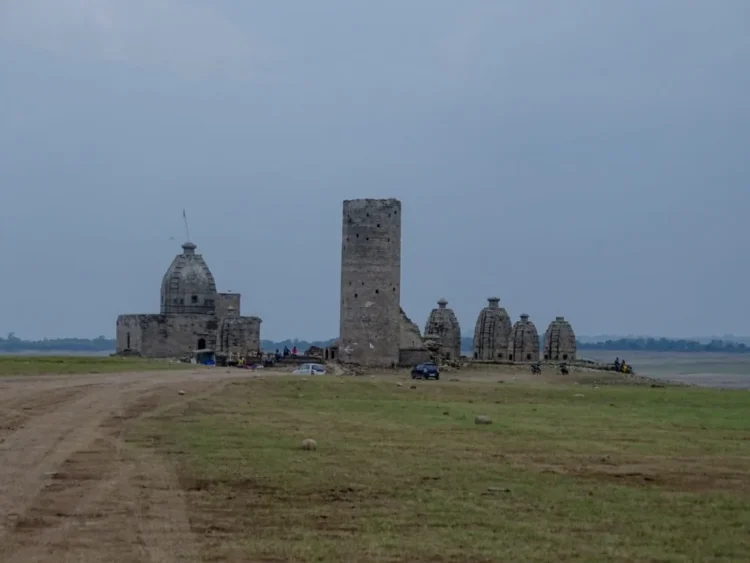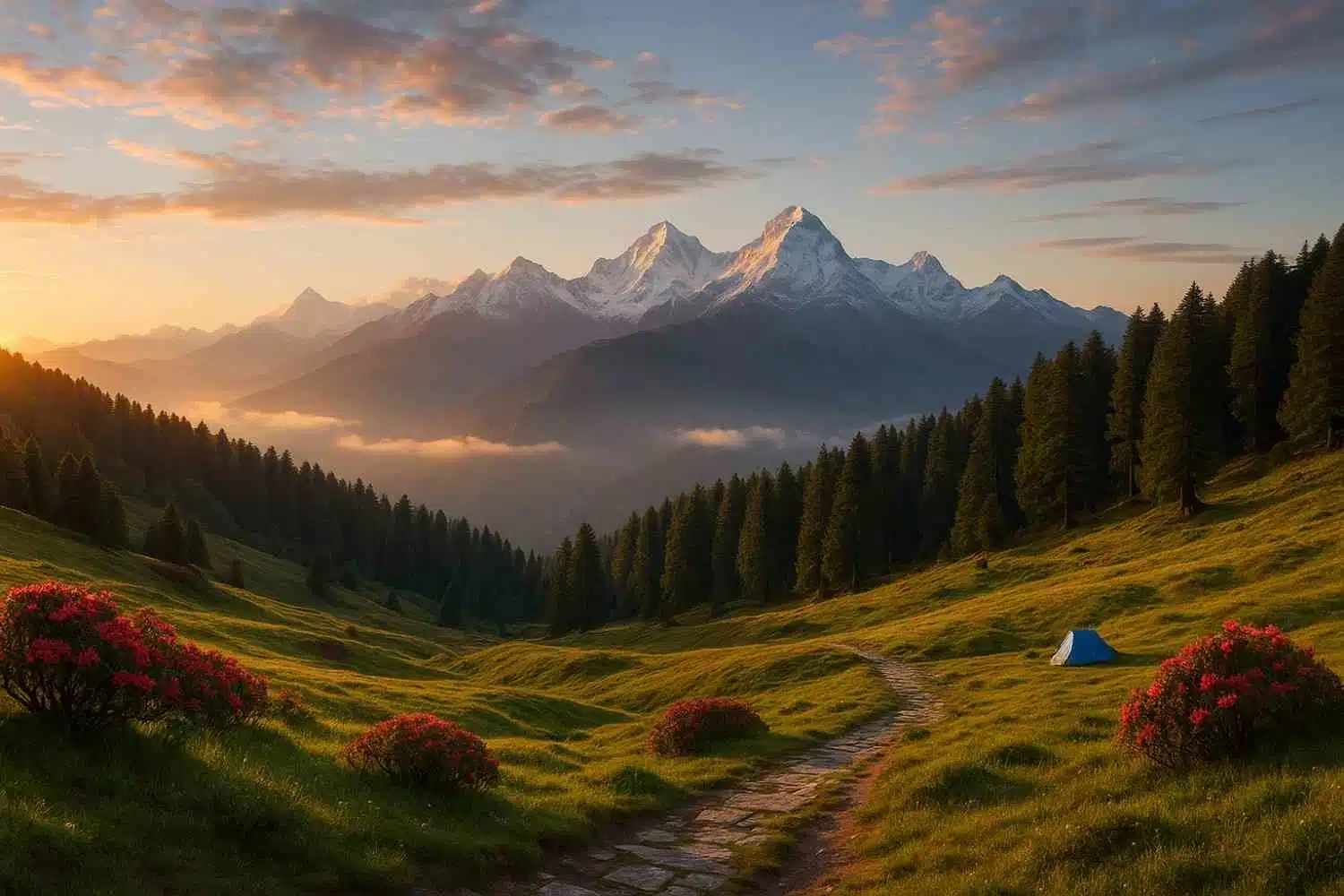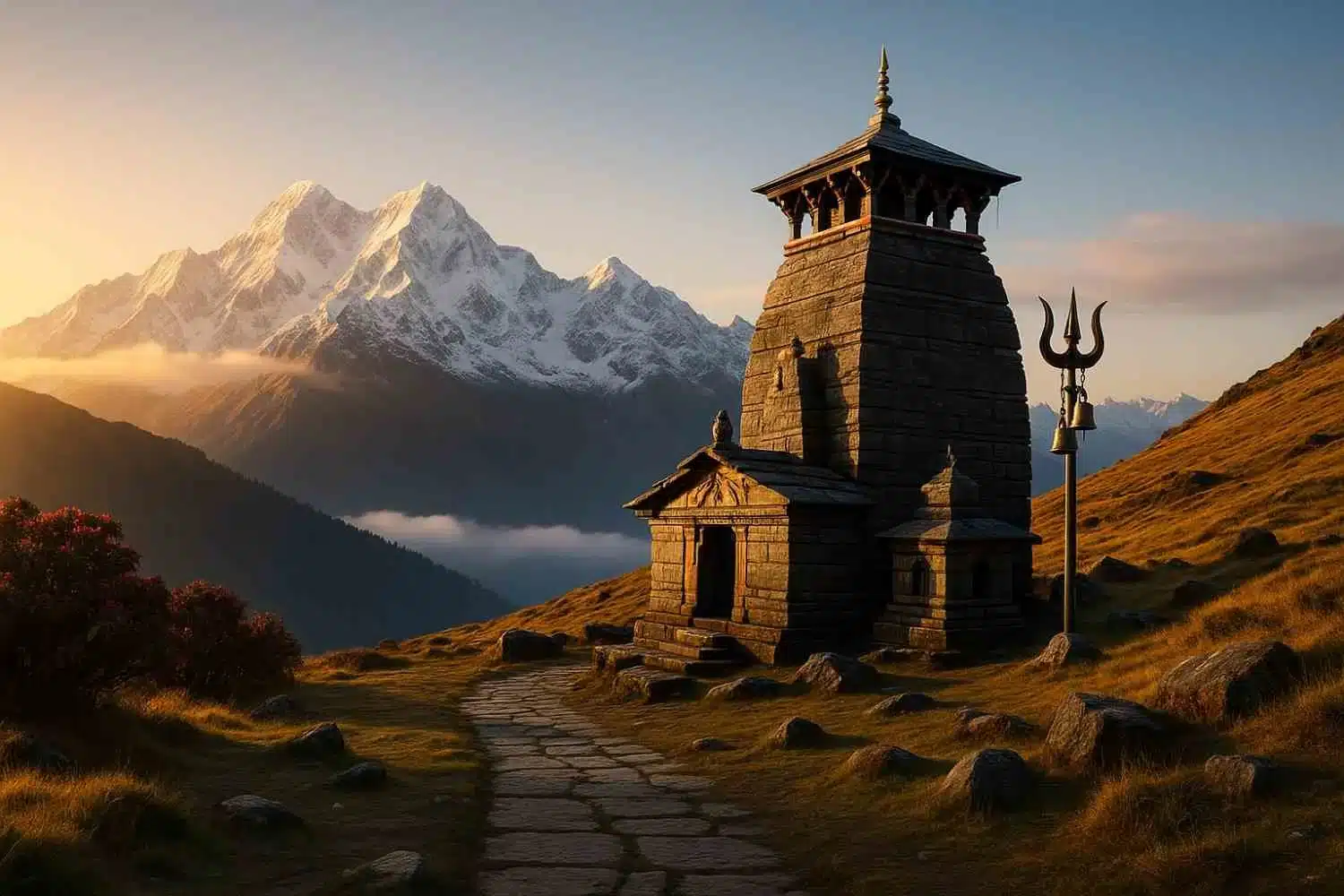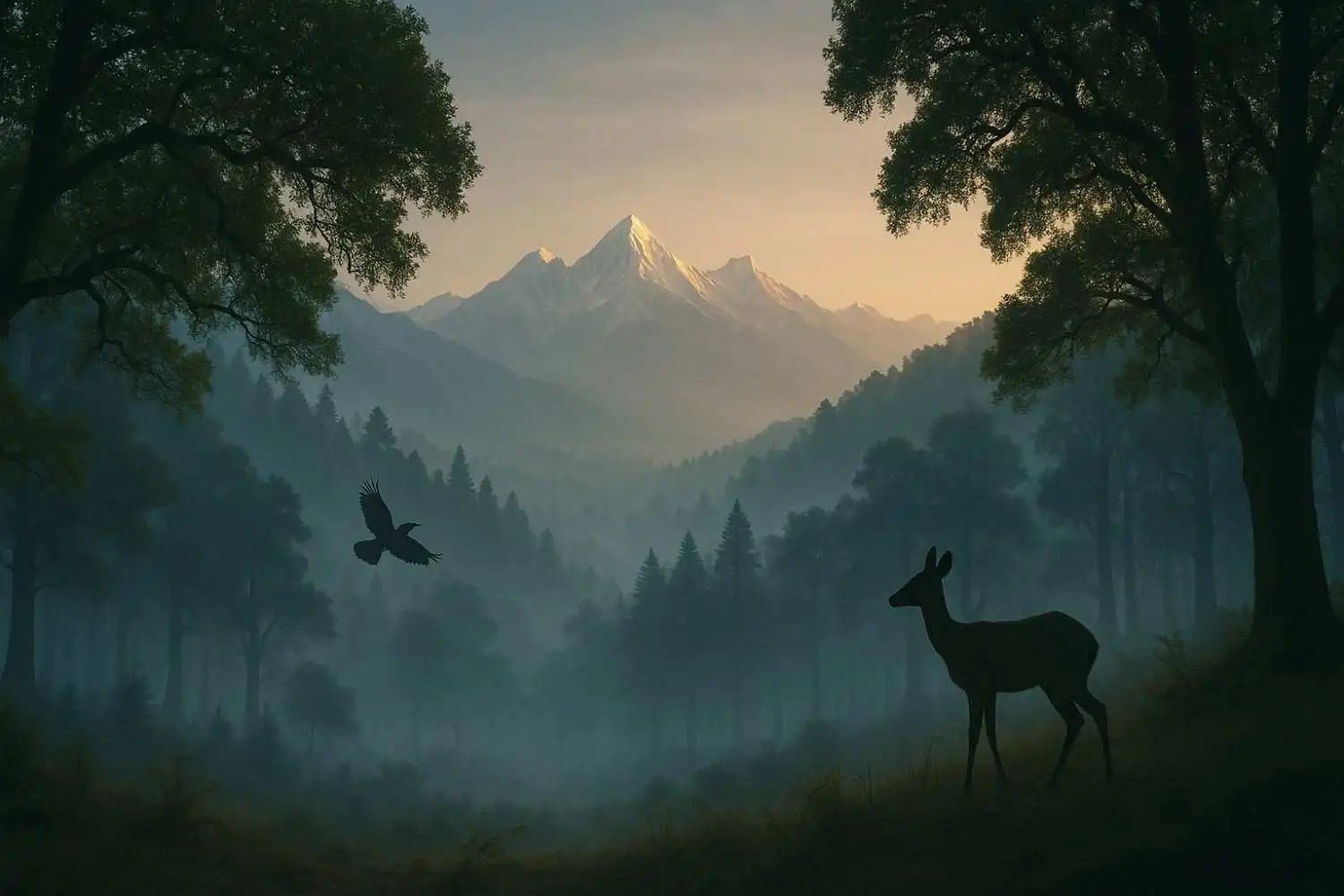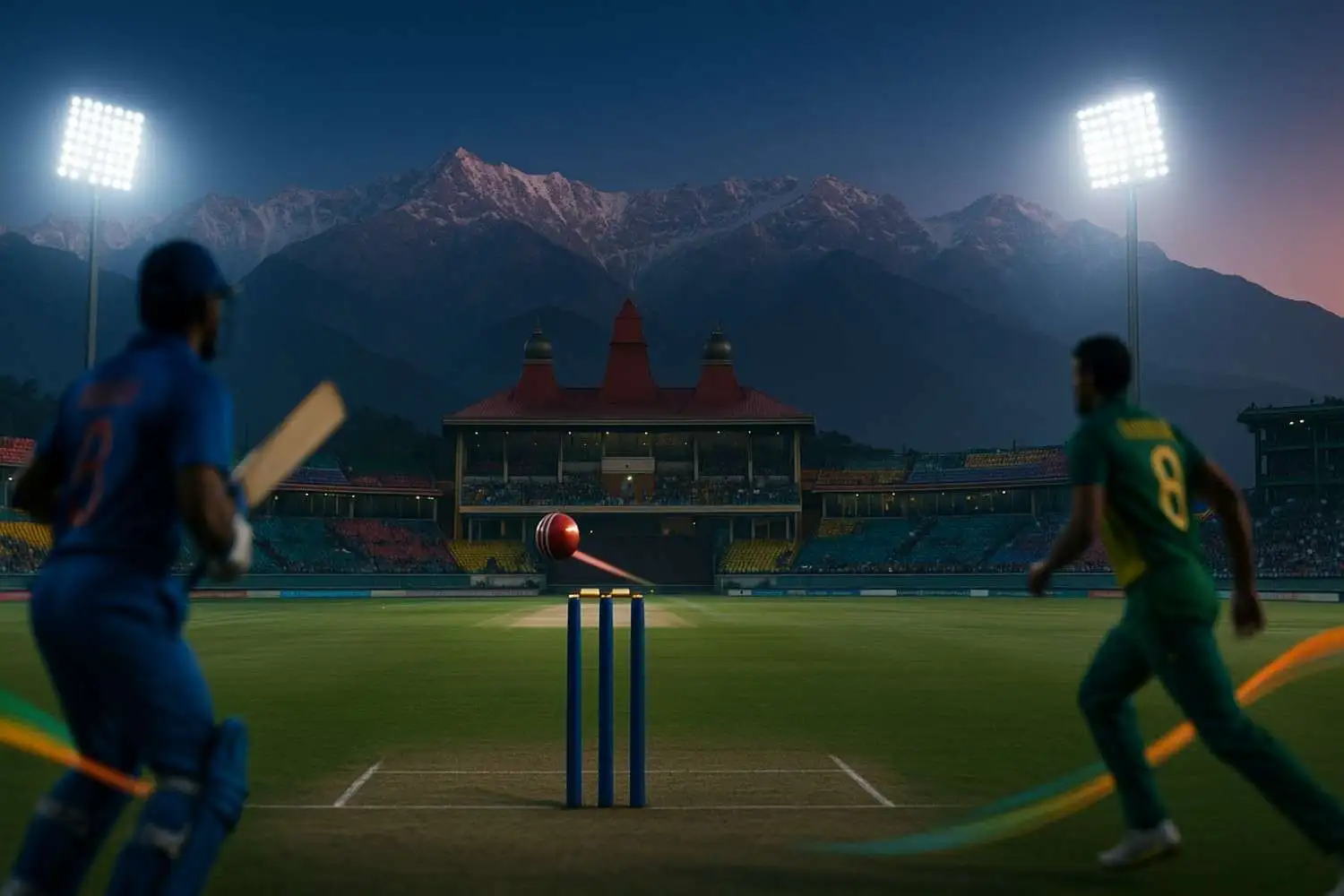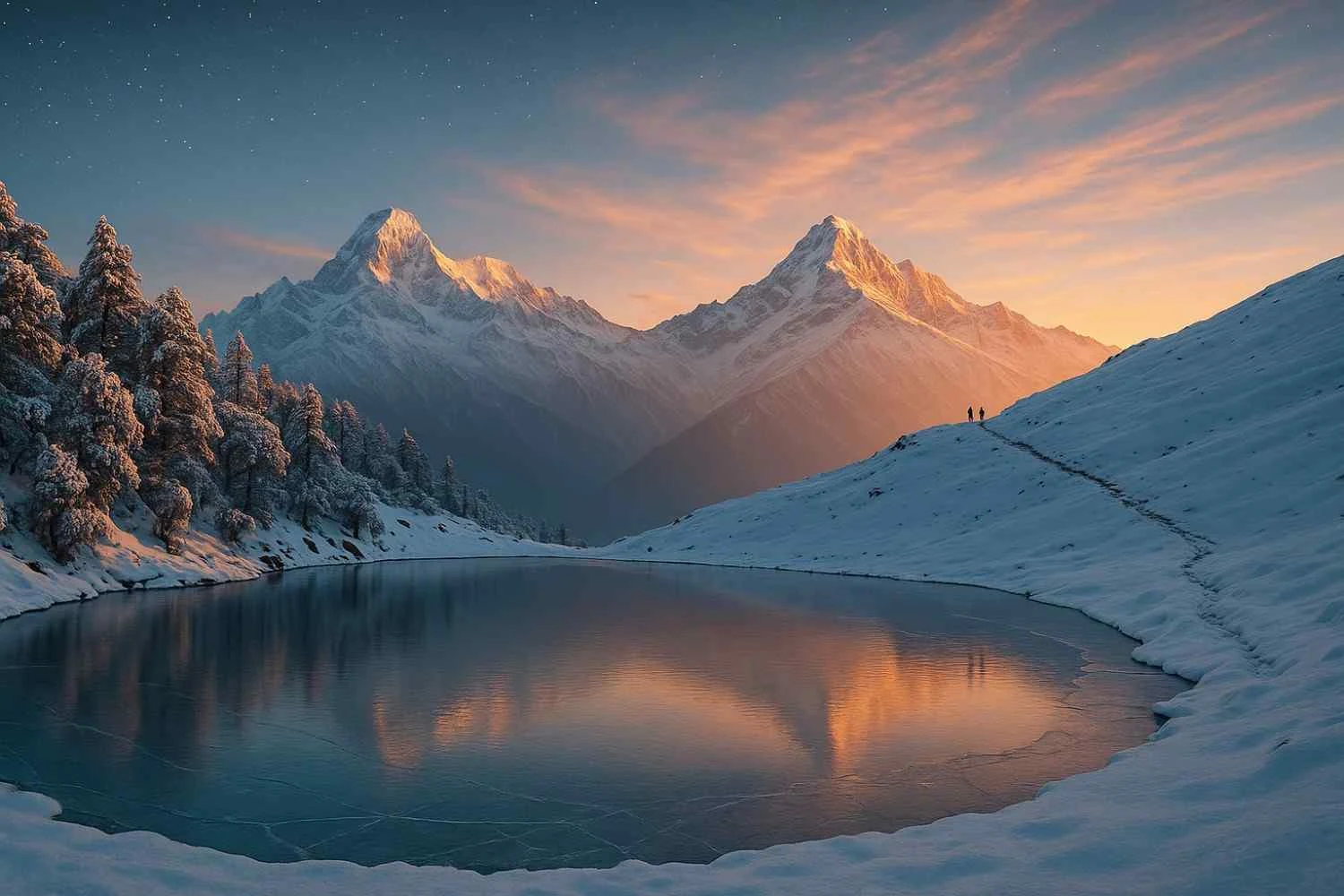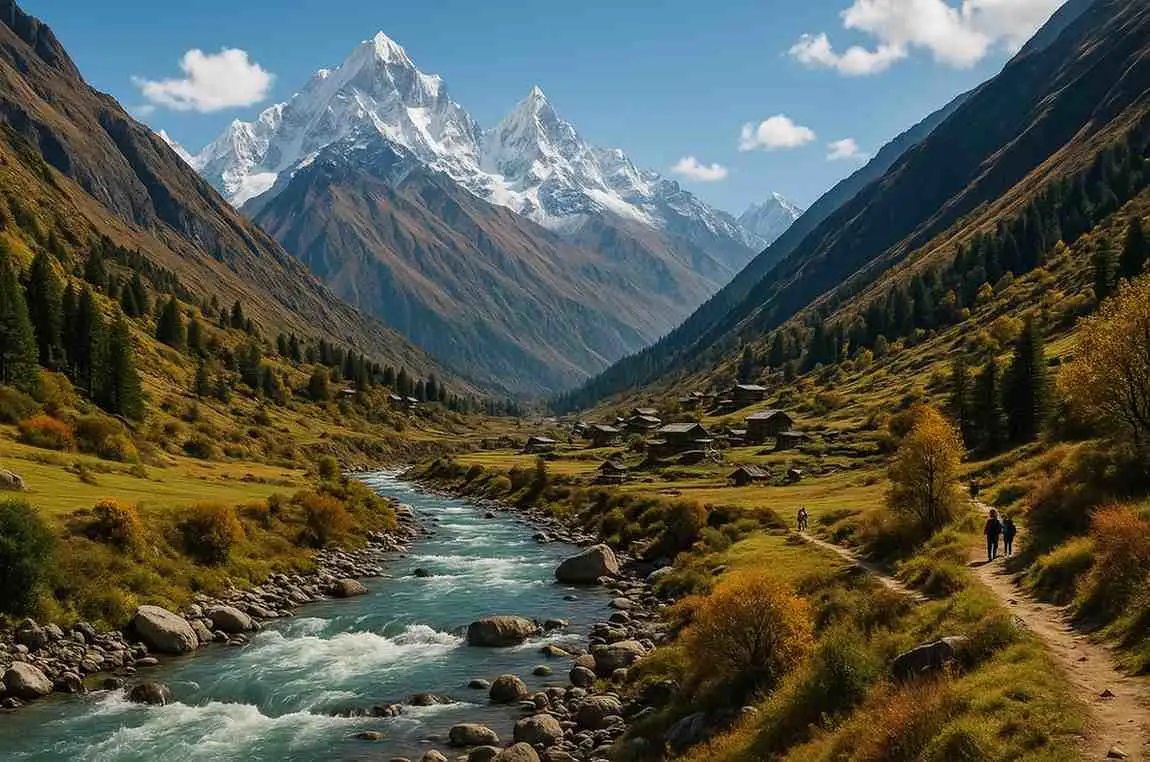Bathu Ki Ladi, which means ‘The Hillock of Bathu’, is an ancient village and a mesmerizing temple complex in Himachal Pradesh that offers a unique blend of history, spirituality, and natural wonder. The temples largely spent most of the year submerged under the waters of the Pong Dam reservoir. The temples reappear during the summer months, specifically from late March to June, as the water levels drop, restoring their former splendour. The legend of the temple is wonderfully interwoven with the Hindu epics, incorporating strong connections with the Pandavas of the Mahabharata, thus turning it into a hidden gem amongst travelers, historians, and spiritual seekers alike.
Introduction to Bathu Ki Ladi
Bathu Ki Ladi is an ancient cluster of temples in Kangra district, Himachal Pradesh, India. It is submerged in the Maharana Pratap Sagar reservoir (Pong Dam) for approximately eight months of the year and emerges only in summer when the water level recedes. The temple was erected by the Pandavas from the Mahabharata and ushers in a great deal of mythology. With the backdrop of its mythological, and of course historical, importance, the fact that the temple resurfaces after being submerged about eight months of the year makes it a very exciting offbeat travel destination.
Bathu Ki Ladi Location & Accessibility
Where is Bathu Ki Ladi?
Bathu Ki Ladi is a temple complex, located on the banks of the Pong Dam reservoir near the town of Jawali, in the Kangra district of Himachal Pradesh. Before the construction of the dam that created the reservoir, these temples were built near the banks of the Beas.
How to Get There?
By Road:
The closest town is Jawali which has good transport connectivity with major cities such as Kangra, Dharamshala, and Pathankot. From there you may take a taxi or a bus to reach Jawali or Nagrota Surian and take a local taxi or even go on by boat to the temple.
By Train:
The nearest railway station is Pathankot, about 100 km away from Jawali. From Pathankot, taxi or bus can be hired to reach Jawali.
By Air:
The nearest airport is Gaggal Airport in Kangra, about 50 km from Jawali. Taxis or local transport could be hired from the airport to reach Jawali.
The best time to visit Bathu Ki Ladi
The temples are generally above the water’s surface between March and June, as it is during this period that the water level is down. It is always advisable to check the water level before your visit. One should avoid visiting during monsoon and winter, as the temple normally stays submerged during these times.
Bathu Ki Ladi History & Mythological Significance
While some believe the temples were built by the Pandavas, local legends state that Raja Sansar Chand of the Katoch dynasty built them during the 16th-17th century. Other historical details remain unknown.
Mythological Connections Pandavas’ Connection:
According to local beliefs, the Pandavas built these temples during their exile as per the Mahabharata.
Lord Shiva’s Blessings:
The main temple, however, is dedicated to Lord Shiva, and it is believed that those who meditate here receive divine blessings.
Sacred Legends: Some stories suggest that temples were built overnight with divine intervention, which gave aerial significance to the place.
Bathu Ki Ladi Architectural Significance
Unique Design and Structure
The temples are made from Bathu stone. Very durable, it is likely less susceptible to water damage. Indeed, with so many years of submersion, they have little or no done to them. The complex consists of a navy of eight temples, which is why it was called “Ladi,” or row.
Key Features:
The main temple is dedicated to Lord Shiva and has elaborate carvings and stone pillars. Other temples enshrine various idols of Hindu deities, including Lord Vishnu, Goddess Durga, and Lord Ganesha. Their robust construction enabled them to withstand decades of submersion, exemplifying the architectural brilliance of the past.
Best Time to Visit Bathu Ki Ladi & Things to Do
Best Time to Visit
Visit when water levels recede between March and June; the temple is visible and complete. Avoid monsoon and winter; otherwise, the site will be flooded entirely.
Things to Do
Temple Exploration:
Walk around the ancient ruins and see the chambers of the temples that were graced by divine entities.
Boating Around Pong Dam:
A boat ride in Pong Dam through the very scenic areas of this during low waters would enable one to see the temples differently.
Photography & Sightseeing:
Shoot sunset pictures of the temples emerging out of the water; these will always remind you of the beauty they hold.
Wildlife & Birdwatching:
Go bird-watching, as the Pong Dam Wetland is home to a migrant flock of birds like bar-headed geese and Siberian cranes.
Bathu Ki Ladi Travel Tips for Visitors
Check Water Levels:
Confirm the visibility of the temple ahead of the planned trip.
Pack Essentials:
Carry some food, water, and other essential supplies since no facilities are available nearby.
Hire a Local Guide:
A local guide can help with vital information about the history, mythology, and architecture of the temples.
Avoid Monsoon Season:
Water levels can rise quickly, and this makes access to the temples impossible if not dangerous.
Respect Religious Customs:
Maintain silence while sojourning around the temple area, honoring its sanctity.
Bathu Ki Ladi Nearby Attractions
Pong Dam Reservoir:
Wonderful for boating, bird-watching, or picnicking in very scenic surroundings.
Masroor Rock Cut Temple:
Another ancient monolithic Masroor Rock Cut Temple that could be explored nearby.
Kangra Fort:
Know the historical importance of Kangra Fort, which is the largest fort in Himachal.
Dharamshala & McLeodGanj:
Extend your trip to those picturesque hill stations with natural charms and Tibetan culture.
Conclusion
Bethu Ki Ladi is a mind-blowing place to visit that truly captures the essence of history, spirituality, and natural beauty. Its one-of-a-kind nature of being submerged for some part of the year makes it rare and unforgettable; one visit to India. Architecture enthusiast, history geek, or spiritual walker, each one of you would love to have a grand journey toward the very heart of Himachal Pradesh.
FAQ
What is Bathu Ki Ladi?
Bathu Ki Ladi comprises a bunch of old temples submerged inside the reservoir of Pong dam in Himachal Pradesh.
Where is Bathu Ki Ladi located?
It’s located near Pong Dam Reservoir, Kangra district, Himachal Pradesh.
What is the best time to visit Bathu Ki Ladi?
The best time is after the month of March until June when the water levels recede and when temples become visible.
Can we go to Bathu Ki Ladi during the monsoons or winter?
No, as the temple completely goes underwater, so monsoons or winters are not the ideal time.
